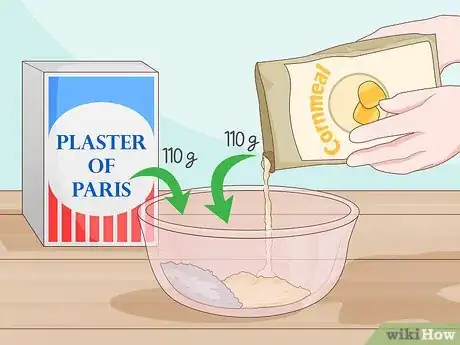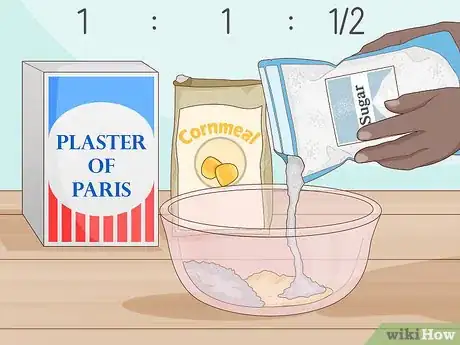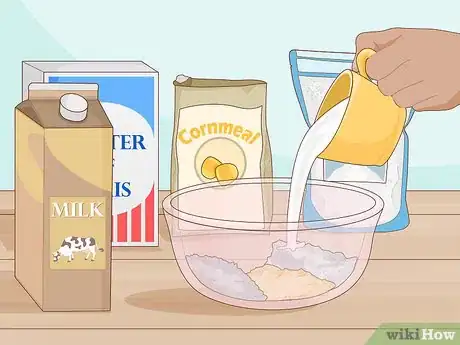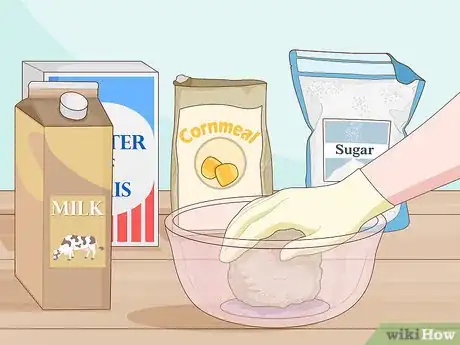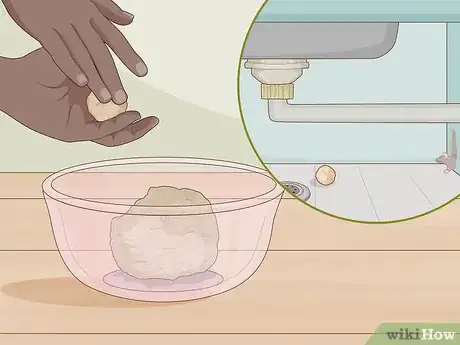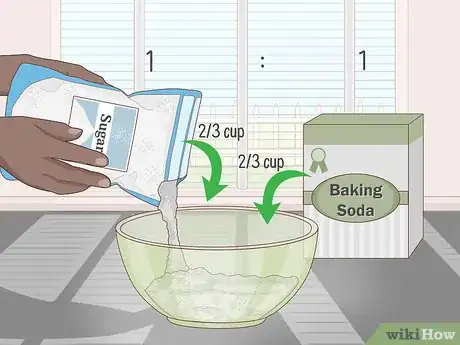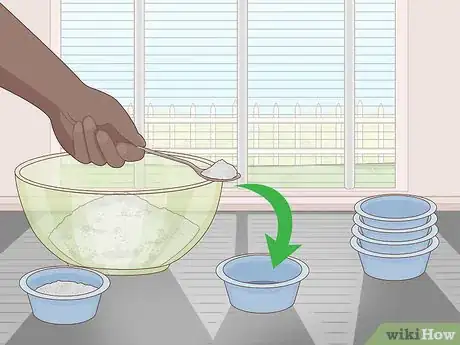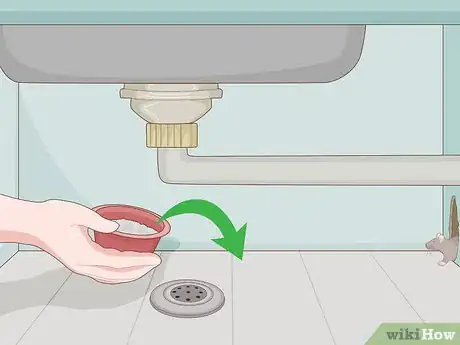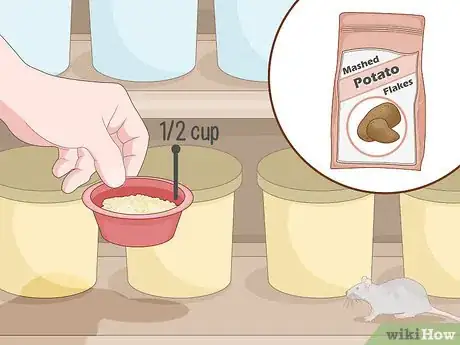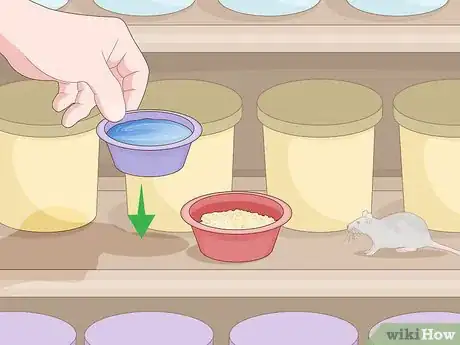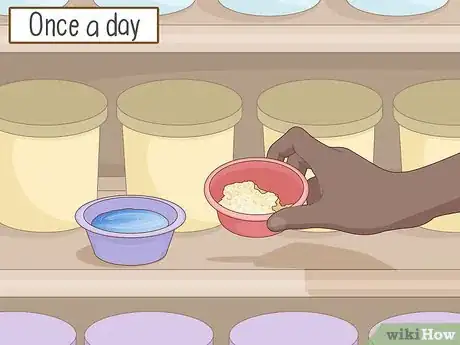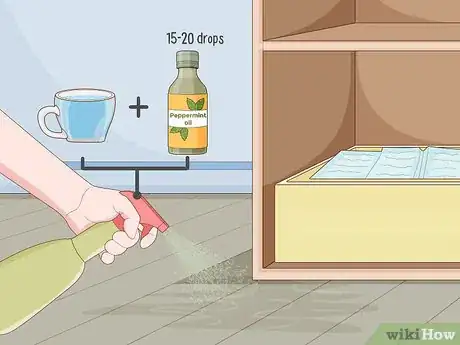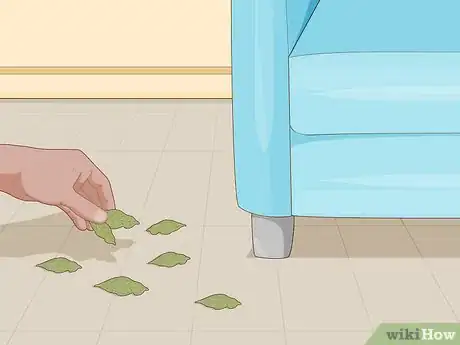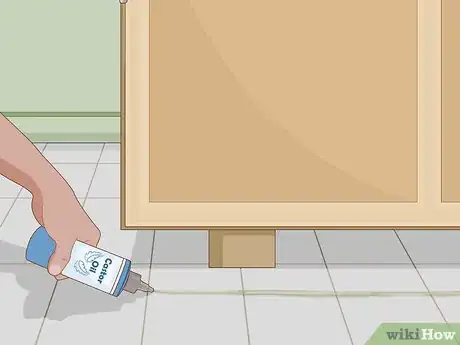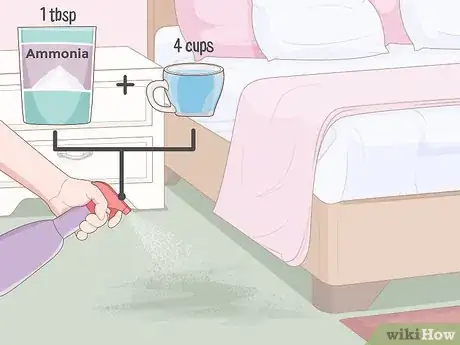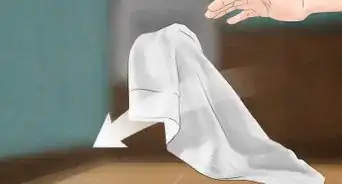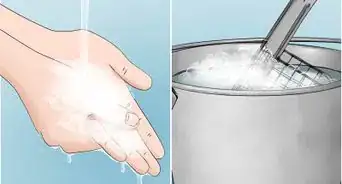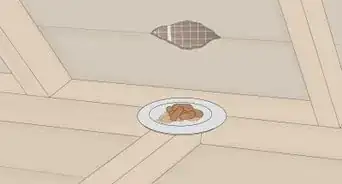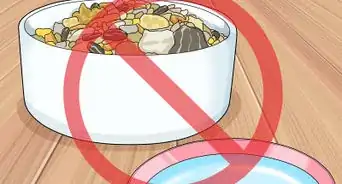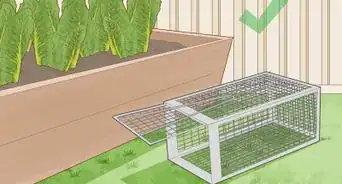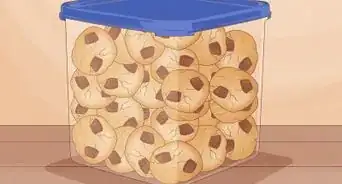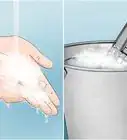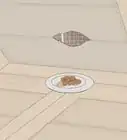This article was co-authored by Kevin Carrillo. Kevin Carrillo is a Pest Control Specialist and the Senior Project Manager for MMPC, a pest control service and certified Minority-owned Business Enterprise (MBE) based in the New York City area. MMPC is certified by the industry’s leading codes and practices, including the National Pest Management Association (NPMA), QualityPro, GreenPro, and The New York Pest Management Association (NYPMA). MMPC's work has been featured in CNN, NPR, and ABC News.
There are 17 references cited in this article, which can be found at the bottom of the page.
wikiHow marks an article as reader-approved once it receives enough positive feedback. This article received 23 testimonials and 92% of readers who voted found it helpful, earning it our reader-approved status.
This article has been viewed 1,477,854 times.
Commercial rat poisons are effective, but they also contain toxic chemicals that could pose a risk to the people and pets in your home. As an alternative, you can make rat poisons at home from common household items, like cornmeal, plaster of Paris, or flour. Though these are less toxic, you should still keep them out of reach and kids and pets when possible, as they shouldn't be ingested once mixed into "poison" for the rats invading your home.
Steps
Creating Poison from Plaster of Paris, Cornmeal, and Milk
-
1Mix 1⁄4 lb (110 g) of plaster of Paris and 1⁄4 lb (110 g) cornmeal in a large bowl. Combine equal parts of these ingredients by weight in a bowl. You can get plaster of Paris at craft stores or home improvement stores and cornmeal at any grocery store.
- If you don't have a way to weigh it, try 2/3 cup (110 g) of each.
- If you don't have cornmeal, try using flour instead in the same proportions.[1]
- The plaster of Paris will get harder in the rats' stomach, eventually killing them.
-
2Add 1/3 cup (55 g) of sugar to make it more enticing. This step is optional, but the sweetness of the sugar will encourage the rats to eat more of the mixture. After adding equal parts of plaster and cornmeal, add half a part of sugar.[2]Advertisement
-
3Start with 1 cup (240 mL) of milk. Pour the milk into the powdered mixture. You may need more milk as you go along, but start with this much so you don't make the mixture too wet.
- If you don't have milk on hand, you can just use water. The milk will give it more flavor to draw in the rats, but most likely, they'll still eat it just for the cornmeal or flour.[3]
-
4Knead the mixture together with your hands. This mixture isn't toxic to humans, so it's not a problem to use your bare hands. However, if you don't want to get your hands all sticky, you can put gloves on
- If the mixture isn't sticking together and you see loose powder still, add more water or milk, a spoonful at a time.
- You want it to form a dough you can roll into balls like clay. If it seems too liquidy, add more plaster and cornmeal/flour in equal parts, only adding a spoonful at a time until you get the right consistency.[4]
-
5Roll the mixture into balls about the size of golf balls. Pinch off some of the dough and roll it between your hands to form a small ball. You can make them even smaller if you prefer. The rats will eat them either way. Place the balls where you see evidence of rats (out of reach of children and pets), and check back in a day or 2 to make sure they're eating the balls.[5]
- If they're not, you may need to move the balls. If the rats still aren't interested, you may need to make a new set.
Mixing Baking Soda into a Rat Poison
-
1Add flour to baking soda and sugar. Mix equal parts flour and sugar together in a small bowl; start with 2/3 cup (135 g) of sugar and 2/3 cup (85 g) of flour. This will be what attracts the rat to the baking soda. Add another equal part of baking soda to the mixture and stir it together.
- You can also just mix sugar and baking soda together.
- You can substitute cornmeal for the flour or hot chocolate mix for the sugar.
- To make the mixture more homogeneous, pulse it in a blender so it sifts together better.
- Another option is to mix 1 part baking soda with 2 parts peanut butter.
-
2Place the mixture into small bowls or lids. For the best results, use disposable bowls or reuse food container lids for this purpose; you don't want to use the containers again after a rat has been digging around in them! Dump some of the mixture in each bowl.[6]
-
3Put the containers in areas where you've seen the rats. For instance, if you've noticed rats near the stove or in your shed, set the bowls along the rats' pathways. If you see places where they've dug, put a bowl nearby for the rats to snack on.[7]
- Look for rat droppings (small, oblong feces), as the rats are likely to be nearby.
- The baking soda mixes with the acid in the rats' stomachs and causes a buildup of carbon dioxide, which eventually kills the rat.
Using Instant Mashed Potatoes
-
1Place bowls of instant mashed potatoes in the rats' path. Use shallow bowls or disposable food lids. Make sure you use something you don't mind throwing away and then add instant potato flakes to them. Set them where you've seen evidence of rats so that the potato flakes will be right in their path.[8]
- Make sure to put at least 1/2 cup (50 g) in each bowl so the rats will really chow down.
-
2Make sure the rats have a source of water. For this to work well, they need to drink water after consuming the potato flakes. Typically, they're pretty good at finding water on their own, but you can also set out small bowls of water near the potato flakes.[9]
- Rats are drawn to the food, so they'll come chow down on the dried flakes. Then, when they drink water, the subsequent bloating will eventually cause their deaths.
-
3Keep an eye out to make sure the flakes are being eaten. Check on the bowls once a day at least. If they're not being eaten, you may need to move the bowls elsewhere.
- Alternatively, try adding 1-2 spoonfuls of sugar to the mix to make the food more enticing.
Trying Repellents
-
1Spray peppermint oil around the area. Add 15-20 drops of peppermint oil or peppermint extract to 1 cup (240 mL) of water and put it in a spray bottle. Spritz it in the areas from where you want to repel rats, as they don't like the smell.[10]
- You'll need to spray the area again from time to time; try to do it at least once a week.
- Peppermint may also deter spiders.
- Alternatively, dip cotton balls in peppermint oil and place them in the areas where you've seen rats.
-
2Place bay leaves around your home. Rats dislike the smell of this leaf. Plus, if they try to chew on it, it may even be toxic enough to kill them. Sprinkle the whole, dried leaves around or even use fresh bay leaves if you grow the plant.[11]
- However, keep in mind that this can also cause stomach issues in other pets, such as cats and dogs.[12]
-
3Drizzle castor oil in continuous lines to help repel rats. Castor oil tends to keep rats away, as they don't like the scent. It's similar to how citronella works on mosquitos. Try making continuous lines of the oil where you don't want the rats to go, forming a sort of barrier.[13]
- You may need to renew this when it rains if you're using it outside.
-
4Spritz ammonia or glass cleaner nearby. Rats aren't fond of the scent of ammonia. Mix 1 tablespoon (15 mL) of ammonia in 4 cups (0.95 L) of water and spray it in the areas you've seen rats. Alternatively, try using glass cleaner that has ammonia in it.[14]
- Never mix ammonia and bleach, as it creates toxic fumes.
Warnings
- Make sure to look for and dispose of the dead rats; a decomposing animal carcass can stink up the house for months, and it's potentially hazardous, too.[16]⧼thumbs_response⧽
- Do not place rat poison where pets or children can get to it. Even though homemade rat poison is less toxic than those made of strong chemicals, it can still be dangerous.[17]⧼thumbs_response⧽
- Wear gloves and a mask when cleaning up leftover rat poison, and don't let the poison come into contact with your skin.[18]⧼thumbs_response⧽
Things You'll Need
Creating Poison from Plaster of Paris, Cornmeal, and Milk
- Plaster of Paris
- Cornmeal or flour
- Sugar
- Water or milk
- Bowl
Mixing Baking Soda into a Rat Poison
- Baking soda
- Sugar
- Flour
- Bowl
- Disposable lids or bowls
Using Instant Mashed Potatoes
- Instant mashed potato flakes
- Bowls
Trying Repellents
- Peppermint oil
- Bay leaves
- Castor oil
- Ammonia or glass cleaner
- Spray bottle
- Cotton balls
References
- ↑ https://www.youtube.com/watch?v=ezvoOu7hP_E&feature=youtu.be&t=516
- ↑ https://www.youtube.com/watch?v=ezvoOu7hP_E&feature=youtu.be&t=668
- ↑ https://www.youtube.com/watch?v=ezvoOu7hP_E&feature=youtu.be&t=808
- ↑ https://www.youtube.com/watch?v=ezvoOu7hP_E&feature=youtu.be&t=829
- ↑ https://www.youtube.com/watch?v=ezvoOu7hP_E&feature=youtu.be&t=942
- ↑ https://www.youtube.com/watch?v=xZJoXsw4vKA&feature=youtu.be&t=125
- ↑ https://www.youtube.com/watch?v=xZJoXsw4vKA&feature=youtu.be&t=135
- ↑ https://www.pests.org/get-rid-of-rats/
- ↑ https://www.today.com/home/rats-here-s-what-do-about-these-pesky-critters-t81701
- ↑ https://www.today.com/home/rats-here-s-what-do-about-these-pesky-critters-t81701
- ↑ https://www.pests.org/get-rid-of-rats/
- ↑ https://www.aspca.org/pet-care/animal-poison-control/toxic-and-non-toxic-plants/bay-laurel
- ↑ https://www.pests.org/get-rid-of-rats/
- ↑ https://www.pests.org/get-rid-of-rats/
- ↑ https://www.telegraph.co.uk/news/2018/03/02/remote-scottish-islands-declared-rat-free-rodents-lured-captivity/
- ↑ http://ipm.ucanr.edu/PMG/PESTNOTES/pn74106.html
- ↑ https://www.verywellhealth.com/rat-poison-first-aid-1298860
- ↑ Kevin Carrillo. Pest Control Specialist. Expert Interview. 22 October 2019.
About This Article
To make rat poison with baking soda, start by mixing equal parts flour and sugar together in a bowl. If you’re not sure how much rat poison you’ll need, start with 2/3 cup of each. Once you’ve mixed the flour and sugar together, add another equal measure of baking soda. Then, transfer the mixture to small disposable bowls or lids and leave them in areas where you’ve seen or heard rats so they'll ingest the mixture. The baking soda causes carbon dioxide to build up in the rats' stomachs, which eventually kills them. For more tips, including how to make rat poison with instant mashed potatoes, read on!
